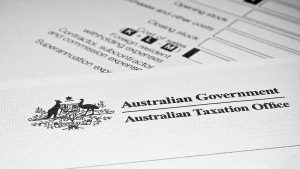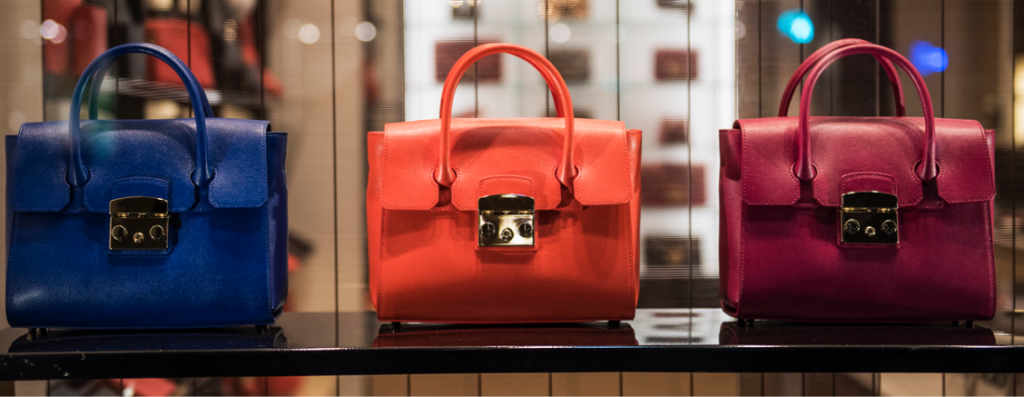Guide to importing luxury goods purchased abroad
In this guide, you will learn:
- Tips for importing items from abroad
- Options for getting your items delivered
- How to import certain items into Australia
- How to import certain items into the U.S.
- How to import certain items into the U.K.
- How to pay for a luxury import
Luxury items from overseas can be imported by: Air cargo, Sea cargo, International mail and Personal importation. Taxes, duties, fees and charges will vary depending on the value of the item and the method of delivery.
Once an item has arrived at customs, it must be cleared for delivery to you. Factors that influence this process include:
- The original value of the item
- The condition of the item
- The method in which it arrived
Top tips for importing items from overseas
- Before you make a purchase, ask the local customs and border agency about restrictions on items, estimated duties, fees and taxes and the documentation or paperwork required for your particular item.
- Lock in an exchange rate to protect your purchase from exchange rate fluctuations.
- Make your payment using OFX instead of a bank. Doing so could save you enough to cover the cost of shipping.
- Research the reputation of the supplier before you buy.
- Arrange adequate insurance for the item.
- Choose a professional international shipping or courier company.
- Request a copy of the bill of lading and collect the details of the shipping company rep.
- Follow all customs and border regulations to avoid hefty fines.
- Talk to an OFXpert if you have questions about foreign exchange.

Getting luxury imports delivered
When it comes to international imports, it’s imperative that you specify delivery terms in your contract. As a private buyer, you’ll most likely want to specify that the item gets delivered to your home or office. Otherwise, you may be liable for expensive warehousing fees, if the seller fails to notify you that the item has arrived at the port. Be advised that most border agencies will not notify you that your goods have arrived. If you do decide to pick the item up at the port, you must be able to prove that the seller sent the item. You can do this by:
- Getting the name and contact details of the foreign freight company or courier service.
- Requesting the bill of lading from the shipper or seller.
Make sure you don’t let your item stay at port for longer than about two weeks, or it’s likely to be transferred to a general order warehouse where expensive storage fees accrue rapidly. In the U.S., items left for longer than 6 months in the warehouse get auctioned to the public.
Which items are restricted to import into Australia?
Some items, such as guns, weapons or daggers may be prohibited, restricted or may require special permits. Items made from wood may require treatment or quarantine to eliminate any pests or diseases. Costs will be borne by the importer. You should expect your goods to be screened, x-rayed and/or examined closely.

Which taxes apply to imports entering Australia?
According to the ATO website, “GST on a taxable importation is payable by businesses, organisations and private individuals, whether they are registered for GST or not. However, if you are a GST-registered business or organisation and you import goods as part of your activities, you may be able to claim a GST credit for any GST you pay on those goods.”
Professional importers may be able to defer GST payments if they meet certain eligibility requirements. Do note that special taxes apply to luxury car and wine imports. Tobacco and alcohol have strict duty-free limits and any items over those amounts will be subject to duty regardless of the value of the item.
From the ATO website:
The value of taxable importation is the sum of:
- The customs value of the goods
- Any customs duty payable
- The amount paid or payable to transport the goods to their place of consignment in Australia
- The insurance cost for that transport
- Any wine tax payable.
Make sure you don’t let your item stay at port for longer than about two weeks, or it’s likely to be transferred to a general order warehouse where expensive storage fees accrue rapidly. In the U.S., items left for longer than 6 months in the warehouse get auctioned to the public.
Which items are restricted to import into Australia?
Some items, such as guns, weapons or daggers may be prohibited, restricted or may require special permits. Items made from wood may require treatment or quarantine to eliminate any pests or diseases. Costs will be borne by the importer. You should expect your goods to be screened, x-rayed and/or examined closely.

Can you get a refund on duty paid?
According to the ACBPS, you will not receive a refund on the taxes and duty paid, if you decide to return the item to the original vendor overseas. However, you may be entitled to a Drawback if you subsequently export the item and meet certain eligibility requirements. It’s important to note that pirated or counterfeit goods may be seized by the Border Protection Service.
Importing luxury Items to the U.S.
According to the U.S. Customs and Border Protection (CBP) website, “to find out if the goods you import into the United States are subject to state or local taxes, you should contact your local or state treasury office. CBP does not collect taxes on behalf of the state.”
How to import art to the U.S.
Original works of art may be imported duty-free, but excessively valuable handmade frames may need to be otherwise assessed and categorized. From the CBP website, “If entering works of art commercially at a land border and the value is under $2500, use CBP Form CF-7523. If the item is valued over $2500 formal entry through a Customs Broker an ACE manifest is required. Personal importation can be done by an oral declaration at a Port of Entry.”
How to import vehicles to the U.S.
Imported vehicles including cars, motorcycles, trailers or boats must meet Environmental Protection Agency (EPA) and Department of Transportation (DOT) standards for emissions unless they are vintage vehicles, in which case they may be exempt. The DOT may place further restrictions on vehicles that were not originally manufactured for the U.S. market.
How to import furniture to the U.S.
Furniture, for personal use, made in countries with normal trade relations status are usually duty free, but there are forms to fill out based on how the item arrives into the U.S. For further information on furniture imported as part of your household goods, refer to the CBP website.
How to import gold, metals, jewels and gems to the U.S.
Coins, medals and bullion must be declared to customs agents if the value exceeds $10,000. Items originating from or purchased in Cuba, Iran and Sudan are currently banned. Gems and jewellery valued at $2500 or more require formal entry. Special requirements may apply to dealers of gems and precious metals. Loose gems from countries with normal trade relations are usually duty free but different rules apply to those that are strung or set, because they count as jewelry and are subject to duty. Diamonds have additional restrictions.
How to import a wine collection to the U.S.
Personal wine collections are not considered household goods and should be shipped separately from household goods to avoid delays in processing. Because alcohol regulations vary from state to state, you should research the local requirements before shipping wine to the U.S. An exceptionally large collection may be suspected of being re-sold and would require additional permits. From the CBP website, “Duty rates for alcohol are based on alcoholic content, not the value of the beverage itself. A general rule of thumb is $1-2/liter for wine and beer, considerably more for cognac, vodka, etc.”
How to import weapons and firearms to the U.S.
Personal weapons and firearms are subject to additional regulations and should be shipped and declared separately from other household effects to avoid lengthy processing delays.


Luxury imports to the U.K.
As of 2017, the U.K. is still part of the European Union. Because of this, the website gov.uk writes that, “The U.K. is part of the E.U. Single Market and the European Commission has sole responsibility for the E.U.’s commercial policy. With limited exceptions (for example, on security or health grounds), the U.K. is unable to introduce national import controls.”
In general, when importing items to the U.K. it is much simpler to import goods from other countries within the E.U. than it is to import from other countries. You may have to pay VAT or Customs and Excise duties on items sent from outside the E.U.
According to the gov.uk website, “Anything posted or couriered to you goes through customs to check it isn’t banned or restricted and you pay the right tax and ‘duty’ (customs charges) on it.
This includes anything new or used that you:
- buy online
- buy abroad and send back to the UK
- receive as a gift.”
You do not usually have to pay tax on importing your own ‘personal belongings’ from overseas (when immigrating) provided they are so designated on the customs form.
From the gov.uk website:
“You pay VAT on goods sent from non-European Union (E.U.) countries and E.U. special territories (eg the Canary Islands) if they’re:
- gifts worth more than £39
- other goods worth more than £15
- alcohol, tobacco products and fragrances (eg perfume, eau de toilette and cologne) of any value.”
VAT is charged on the total value of the item which includes the price, insurance, shipping costs and duties. There is no charge on gifts valued at under £135, above that charges depend on the item.
In the U.K., you can ask for a refund of VAT or duties if you return the item to the overseas seller.
How to pay for your luxury import with OFX
Transferring your payment with your bank could be the most expensive way to pay for your luxury import, because banks often charge a margin of 5% above the daily exchange rate. Use a specialist service provider like OFX instead, and you may save enough to cover the cost of the insurance.
Exchange rates and rapid fluctuations can also affect the value of your purchase, take advantage of the tools available to you to insulate yourself from risk. Forward Contracts let you lock in a rate for up to 12 months, so you get the rate you want even if the sale gets delayed. If your timing for payment is flexible, Limit Orders will let you set a target rate, so your transfer only progresses when the rate is right. Using OFX, you can also set up recurring payments at fixed or non-fixed rates of exchange.
Ready to get started? Sign up for free or speak to an OFXpert.
With offices around the world, we’re on-hand to answer questions 24/7
Business Clients
+65 6817 8748
Business Development/Partnerships
Singapore Office Address
OUE Downtown Gallery, 6A Shenton Way, #4-01 to #4-09, Singapore, 068815